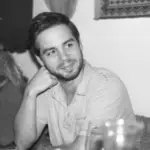"Runaway Train" raised awareness of 36 missing children across America, and 21 of the kids were later reported to be found. But many of their stories did not have happy endings.
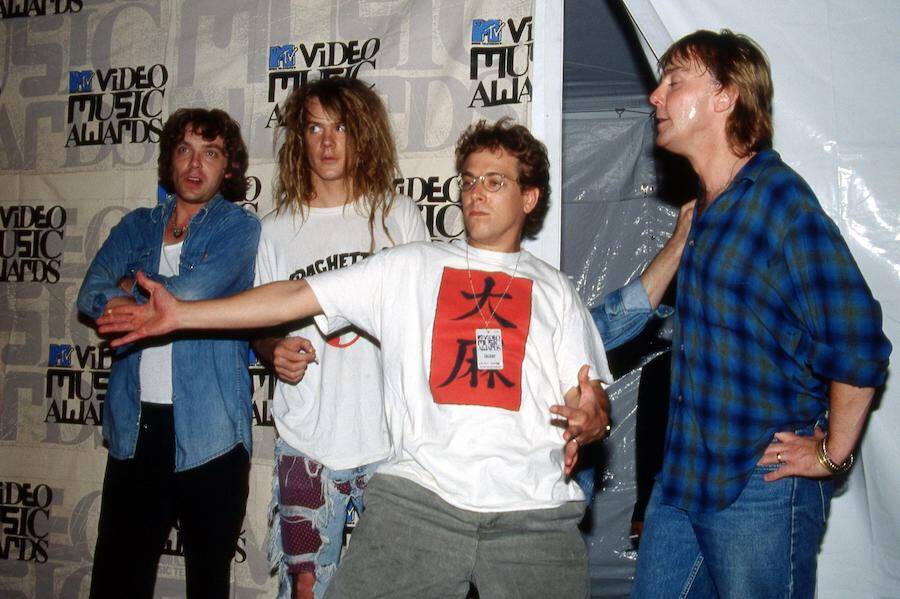
mpiRR/MediaPunch IncThe alternative rock band Soul Asylum at the 1994 MTV Video Music Awards.
Music has been a form of human expression since time immemorial, but the advancement of technology has also given it another function: activism. Soul Asylum’s 1993 music video for “Runaway Train” was just that — and it featured the photos of dozens of missing children.
The haunting ballad itself appeared to explore personal emotional struggles, and it did quite well on the charts. The song not only reached No. 5 on the Billboard Hot 100, but it also helped turn Soul Asylum’s album Grave Dancers Union into a multiplatinum success and landed the alternative rock band a Grammy nomination for Best Rock Performance.
The socially conscious video went beyond musical expression, however, and reports eventually stated that the video helped authorities recover 21 missing kids across the United States. But the truth was more complicated.
This is the story behind Soul Asylum’s “Runaway Train” — and the harrowing cases of the missing children featured in the song’s music video.
Soul Asylum’s Road To Success And The Hit Single “Runaway Train”
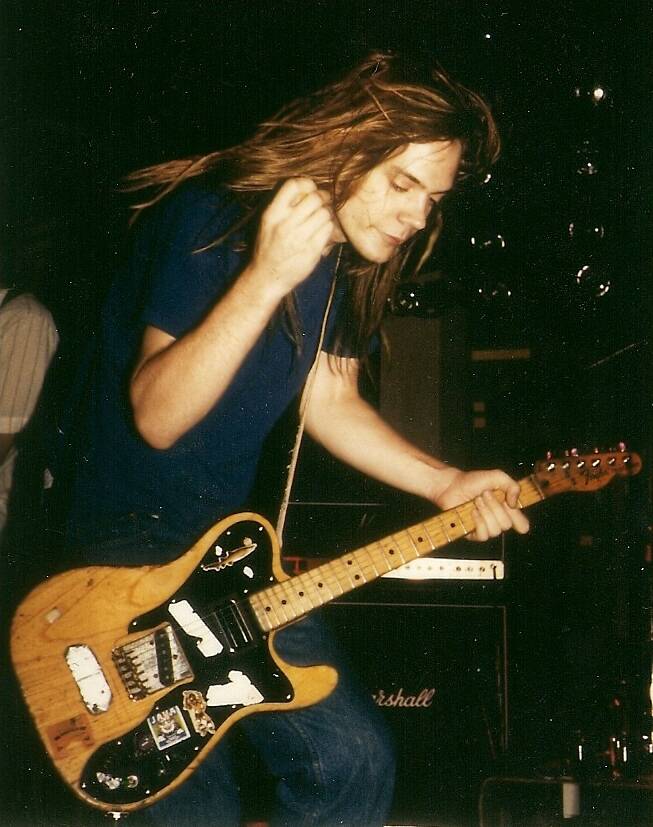
Wikimedia CommonsSoul Asylum’s Dave Pirner performing in 1990.
Soul Asylum was formed in Minneapolis in the early 1980s under the original band name Loud Fast Rules by lead singer and guitarist Dave Pirner, guitarist Dan Murphy, bassist Karl Mueller, and drummer Pat Morley. Morley was soon replaced by Grant Young, with the band rebranding as Soul Asylum.
Their work was often described as alternative rock, which gained the band a cult following and several albums on independent labels like Twin/Tone. Grave Dancers Union, their 1992 studio album under Columbia Records, truly took them to the top — thanks to their hit single “Runaway Train.”
Pirner stated publicly that he wrote the song while suffering a nervous breakdown out of fear of losing his hearing. The lyrics explored the subsequent depression he suffered, likening it to sleepless nights on a train that was barreling in the wrong direction. Producer Michael Beinhorn pushed Pirner to complete 100 vocal takes to properly capture its rawness.
The melancholic tune ultimately stood out from the more aggressive grunge songs of the early 1990s. It was the music video, however, which premiered on MTV in May 1993, that truly captured the mainstream public’s attention.
Why Soul Asylum’s “Runaway Train” Featured Missing Children In The Music Video
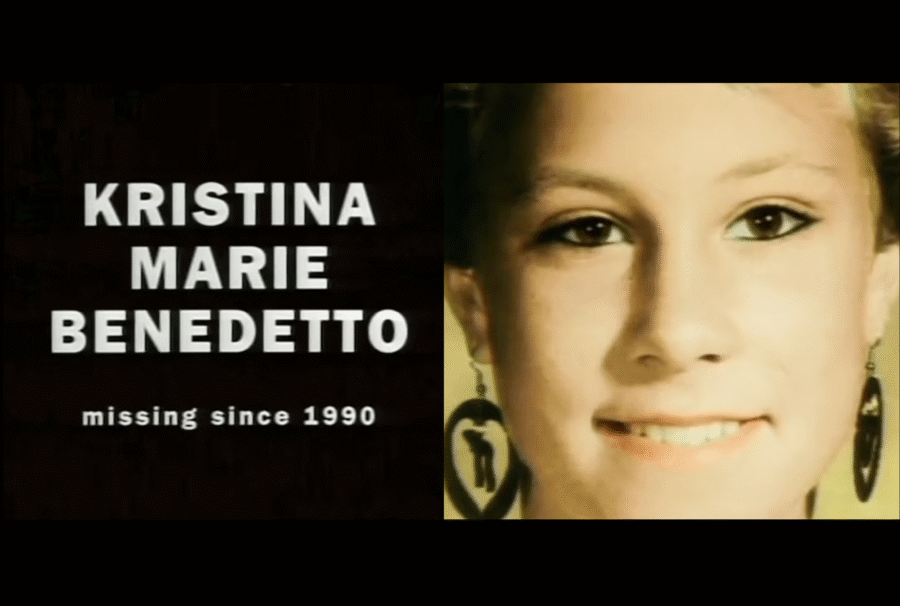
Soul Asylum/YouTubeA still from the 1993 music video. Kristina Benedetto, who suffered from epilepsy, tragically died years after the “Runaway Train” music video aired, likely due to a fatal seizure.
Tony Kaye was already an established director with two music videos for Pink Floyd singer Roger Waters under his belt by the time he was hired by Soul Asylum to direct their “Runaway Train” music video. His three versions for the “Runaway Train” video showed different sets of 36 missing children, with the idea initially inspired by a roadside poster showing a missing child.
“There are over one million youth lost on the streets of America,” the videos noted in onscreen text, before presenting the photographs and names of each missing child, along with the year that each one disappeared. When airing the video, MTV often added a final call-to-action that read, “If you’ve seen one of these kids, or you are one of them, please call this number.”
Sadly, 11 children featured in the videos remain missing today. Some of the notable unsolved cases include: Andrea Durham (13, Fort Walton Beach, Florida, 1990), Byron Page (17, Los Angeles, California, 1992), Christopher Kerze (17, Eagan, Minnesota, 1990), Aundria Bowman (14, Hamilton, Michigan, 1989), Kimberly Doss (16, Davenport, Iowa, 1982), Duane Fochtman (15, Lincoln City, Oregon, 1986), and Thomas Gibson (2, Azalea, Oregon, 1991).
The lives of their families were often irreparably altered after the children’s disappearances. Thomas Gibson’s father was convicted of second-degree manslaughter in connection to his child’s disappearance, even though the body has never been found. And just before Christopher Kerze disappeared with his family’s van, he wrote his family a note that read, in part, “Back by six. (Unless I get lost.)” Chillingly, the words “get lost” were underlined.
Director Tony Kaye told The Guardian in 2022 that the National Center for Missing and Exploited Children gladly provided him with photos of missing children, but when the videos debuted and no children were immediately found as a result, the record company wanted him to remove their faces — only for some of the missing children to soon miraculously reappear.
Lead singer Dave Pirner told The Guardian that “Runaway Train” remains one of his most personally cherished efforts to date.
“It overshadowed everything else we did, but I’m pleased that the song has a resonance that is not about partying and screwing,” Pirner explained. “It’s a sad and reflective song that reminds people that it’s not all candy out there, but that they’re not alone.”
The Reappearance Of Some Of “Runaway Train’s” Missing Children
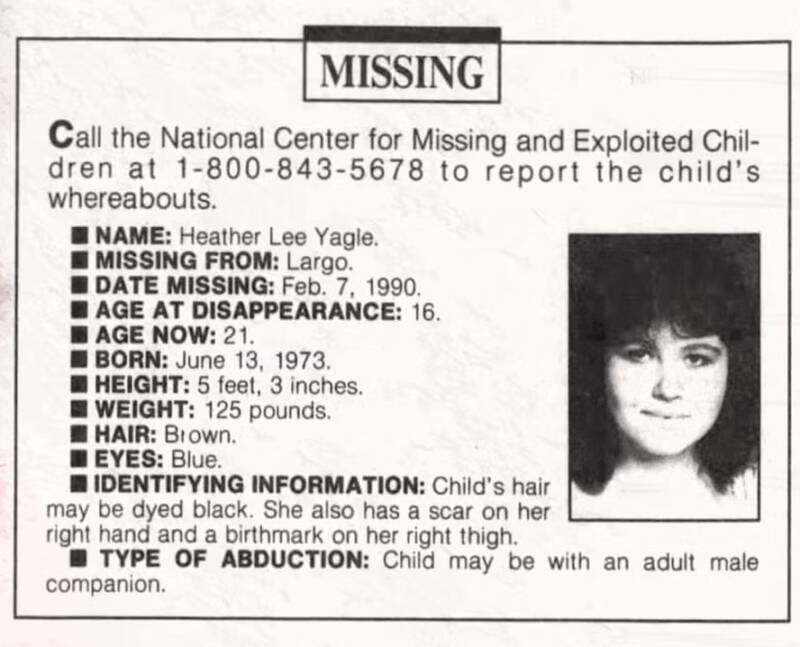
National Center for Missing and Exploited ChildrenHeather Yagle was featured as one of the missing children in Soul Asylum’s “Runaway Train” music video, but it was later revealed that she’d been fleeing a horrific situation at home.
Eleven of the children from Soul Asylum’s “Runaway Train” videos have never been found, and four have been officially ruled dead. But it was eventually reported that 21 of the 36 children in the videos had been rescued. Tony Kaye told The Guardian that the first to be found was Elizabeth Wiles, a young teenager who had run away from home with her older boyfriend.
“She’d been watching TV with friends, seen herself in the ‘Runaway Train’ video and called her mom,” Kaye said, while also noting that “it wasn’t always plain sailing for the families afterwards.”
Indeed, many of the children didn’t consider themselves to be missing, and they had willingly run away from home while underage. Such was the case with Jessica Molnar, born Jessica Williams in 1975, who told Slate in 2023 that she “never had a dad” — and simply left her “toxic” home life and her mother’s endless series of partners after she turned 16.
Molnar took a bus from Colorado to Texas, where a friend offered her a place to stay. She also obtained a fake ID, found work at Walmart, and eventually saw the “Runaway Train” video on TV. Molnar was unhappy to see herself in the video, especially since she had already turned 18 by that point and had also called her mother to tell her she was safe before the video aired. Now a mother herself, Molnar recently said she had no regrets about running away.
Molnar was clearly not the only missing person who wasn’t looking to be found. Soul Asylum’s former guitarist Dan Murphy told Slate that a girl once confronted the band, asking, “Why are you f**kers trying to ruin my life?”
Perhaps most disturbing, some of the missing youths had actually been fleeing abusive homes, like Joyce Collier and Heather Yagle. Both Collier and Yagle later reported having a mother whose boyfriend sexually abused them.
While Kaye remains adamant that “21 of the 36 kids” his video featured have been found, the full truth is clearly a little more complicated.
The Complex Legacy Of “Runaway Train” And The Missing Children Featured In The Video
Perhaps the happiest story to emerge from Soul Asylum’s “Runaway Train” music video was that of Elizabeth Wiles (now Liz Vatovec). As a young teenager, Elizabeth Wiles had run away with her older boyfriend and decided to call her mother after seeing her missing person’s photo in the famous music video. Soon afterward, she reunited with her family, eventually earned her GED, and now works as a real estate broker and licensed contractor.
She also says “Runaway Train” remains a big part of her life today. Notably, however, she was the only formerly missing child who was willing to appear in an Access Hollywood segment on the 30th anniversary of the music video.
Still, Kaye maintains that his work was instrumental in 21 cases, and hailed his video as the peak of MTV’s cultural impact: “It worked because the song was perfect for it. I’d argue that it was the single most important thing that happened in the history of MTV, because it saved young people’s lives.”
The legacy of “Runaway Train” was ultimately bolstered by true crime obsessives, television culture, and the popularity of music videos. Soul Asylum even found support from a young Chelsea Clinton, who helped convince them to play outside the White House on Sept. 14, 1993.
“They made that wonderful song about runaway children, which had a big impact on young people throughout the country,” her father, then-President Bill Clinton, told MTV News at the time.
The music videos did help reunite Elizabeth Wiles (now Liz Vatovec) with her family, and her mother was reportedly overjoyed to have her back. But the videos’ role in “rescuing” 21 children remains debated today, especially since some of them had been fleeing toxic or abusive situations in the first place. Meanwhile, speculation remains about the children who have yet to be found, and it’s unclear whether those mysterious cases will ever be solved.
Next, go inside some famous unsolved disappearances. Then, discover 11 cases that “Unsolved Mysteries” helped solve.

